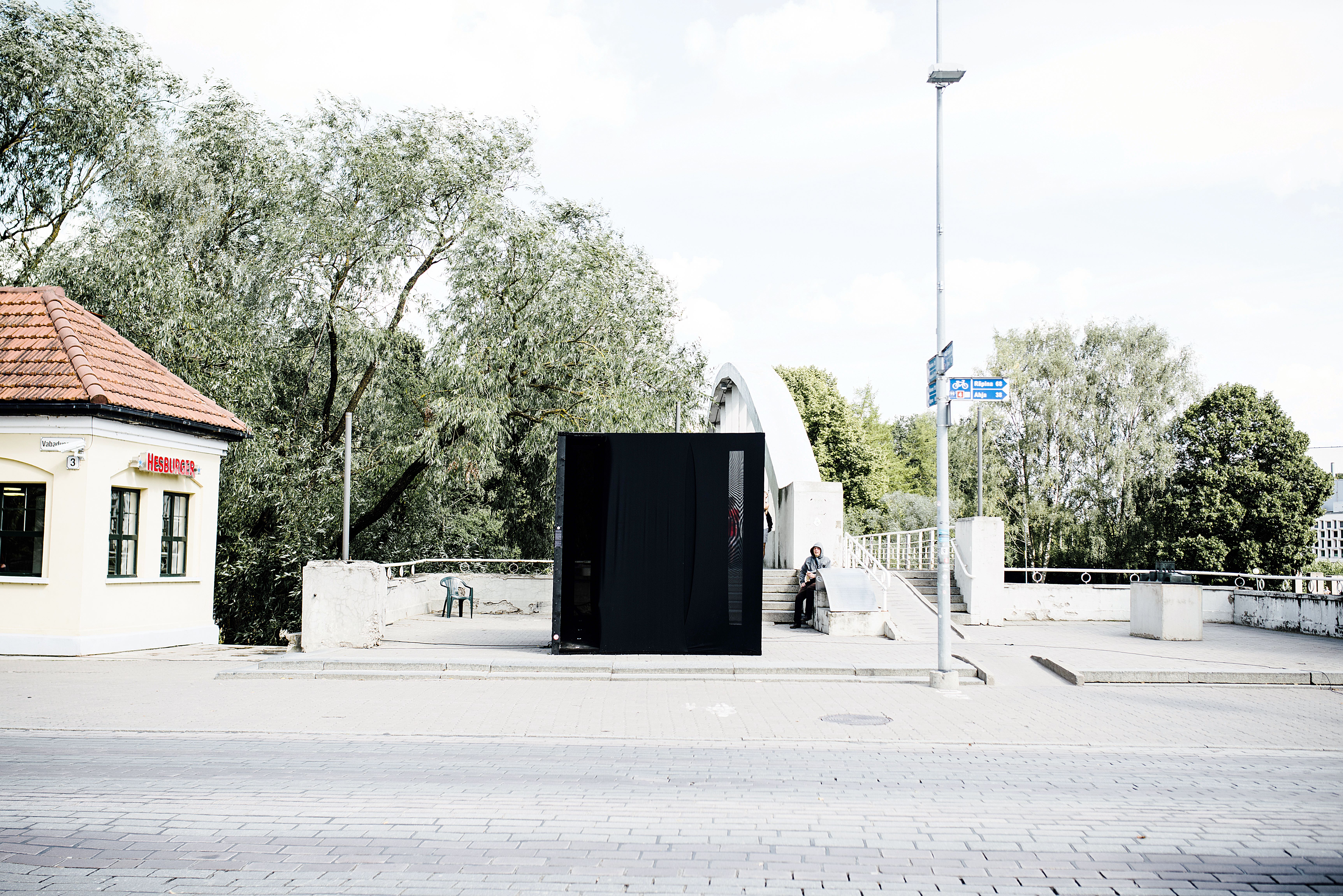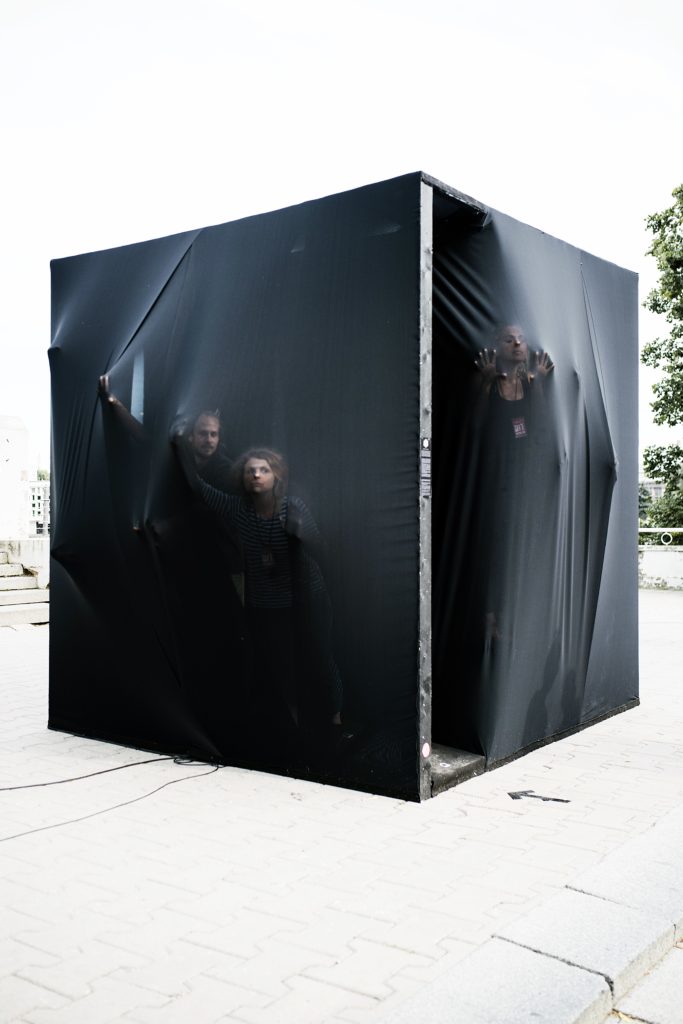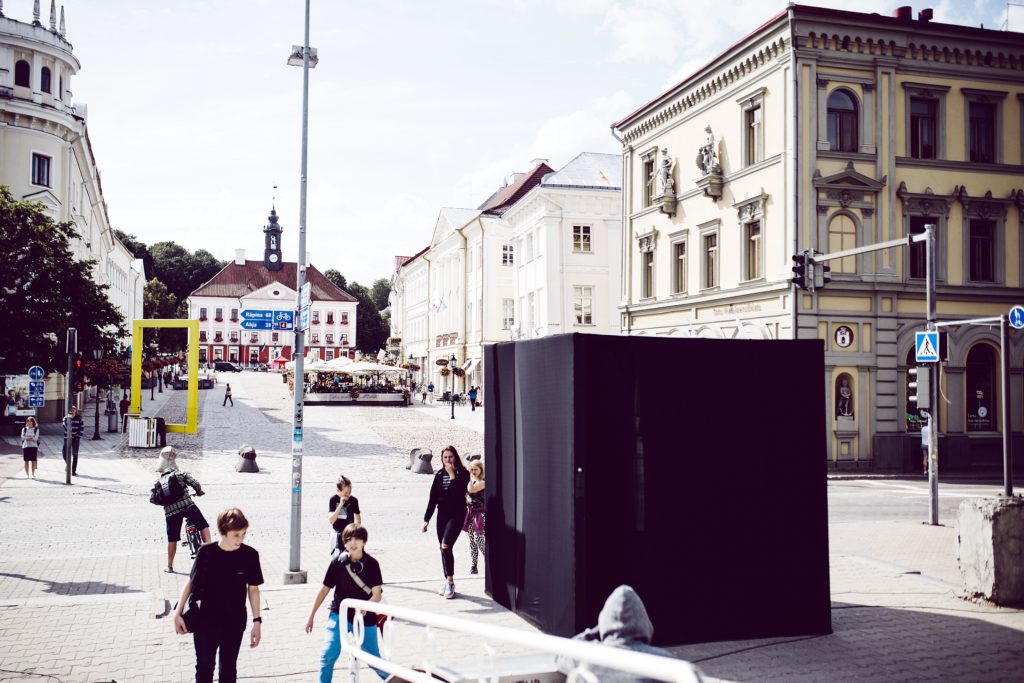„Minusoid on Sinusoid" was the work of the first graduates of the student installation programme of the Urban Festival UIT. The aim of working with students was to encourage them to play more with the public space, to invent and to cooperate with other students outside the university. The team was close-knit, practical and keen on taking risks resulting in completely unexpected encounters with strangers that are almost impossible to forget. And it is precisely the kind of eerie, yet memorable and candid experience that we are after at UIT.
Kadri Lind, Programme Curator of Urban Festival UIT
“Perhaps that’s what I feel, an outside and an inside and me in the middle. Perhaps that’s what I am, I am the thing which divides the world in two, on the one side the outside, on the other the inside, that can be as thin as foil, I’m neither one side nor the other, I’m in the middle, I’m the partition, I’ve two surfaces and no thickness, perhaps that’s what I feel, myself vibrating, I am the tympanum.”
Samuel Beckett “The Unnamable”
Liina Soosaar
The urban festival UIT was looking for installations that would correspond to the main theme of the student programme “An Encounter with a Stranger”. We were interested in strangeness as a feeling or phenomenon and we mainly focussed on the creation of an atmosphere as a meeting place. Just like recognition, also strangeness occurs at the moment of noticing. Recognition usually marks the end of increased attention. The longer something remains strange, the longer it keeps us alert. The installation “Minusoid on Sinusoid” attempted to provide an extended threshold between the known and the unknown – highlighting and maintaining strangeness in a familiar place.
The installation included open microphones connected with the black box that were located in nearby public and also more sheltered places, for instance, by the steps leading down to the bridge and on the promenade along the river. The conditions for the emergence of the strange were created and the opportunity to rebel against the social code was not left unused. A scene where a loud bigoted political tirade distorted by sound effects (making it all the more surreal) or a teenage boy’s zesty and uncensored self-expression can be heard from a black box in the city centre is far more real than some more habitual situation. It doesn’t happen too often that something gets so out of control and fails so miserably. At the time it seemed indeed that the sense of strangeness also included an intense sense of presence.
All the events taking place within and around the installation were actually a sequence of impromptu activities – one night, for instance, there were turntables in front of the pavilion with the local DJs occupying the space. The black box literally became a giant speaker living up to its physical appearance.
That is perhaps the whole idea of installations – unexpectedness. Both in its pleasant and disturbing sense. To disrupt our daily life and offer new dimensions.
Kadri Lind, Linnafestival UIT programmi kuraator
























































































































































































